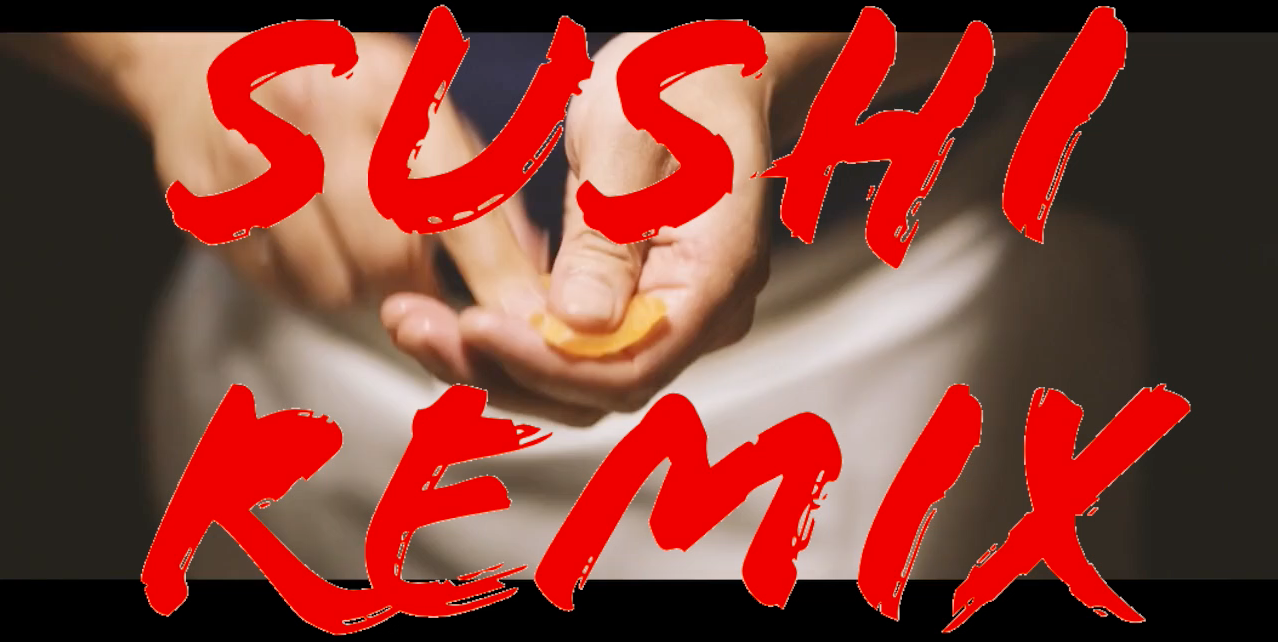SUSHI REMIX

Context and Theory
All cultures emerge from influence, mixing, and remixing. Food culture is rife with examples of regional influences and transformations. Indeed, like all human activity, people have a desire to make good food—not only for themselves but for those around them. If there ever were a more consistent type of “making culture,” it would be food. Every culture uses both their traditions and resources to create a unique cuisine. However, resources change, and people migrate. There are many examples of how food has evolved and changed as a result of influence and transformation through “remixing.”
Sushi is a good example.
Like most food cultures, sushi, as we know it, has transformed through influences, demand, and responses to a crisis. Concerning the latter, sushi chefs began serving ground wasabi with raw fish during the Edo period. While the science was likely unknown, the root contains anti-microbial properties that reduced the risk of food poisoning. This practice was likely a response to movement of fish into the interior of Japan as demand for sushi increased. However, no doubt people developed a taste for it. Due to cost, most sushi restaurants do not serve real wasabi today, but rather a type of processed horseradish.
Remixing is adapting and innovating.
Moreover, much like sushi, education and teaching require the same process. Whether concerning technology or pedagogy, Good teaching “remixes” in response to not only inspiration but also need. By modeling new approaches to the curriculum, students will be inspired to embrace their own making and remixing.
This video is an example of how students might research a particular topic of their choice, find videos and images, and piece them together in a project.
How I did it.
After some research on the history of sushi, I visited both Vimeo and Prelinger Archives for film clips. After writing a script, I recorded the audio using a Blue Yeti USB Microphone and GarageBand. I then added the various clips and my audio to iMovie to edit the video and audio together. I removed the sound from the original clips, but saved the music from one of the clips as background music. I created the “Sushi Remix” text on a white background using Adobe Spark and used Lunapic to make that image have a transparent background. I then uploaded the image to my project and overlay it over some video.
What’s important to note here is that while I have used a few of these technologies here-and-there, I have never undertaken a large task like this before. Students would likely have the same experience that I had.
Portions of the video came from the following locations:
“My Japan” from the U.S. Treasury Department, c. 1945 — Public Domain
“The Fighting Tuna” — Public Domain Mark 1.0
“Authentic Japanese Sushi Experience” from Kim Laquindanum and Daniel Apolto — Attribution 3.0 Unported (CC BY 3.0)
“Sushi Confidential Commercial” — Public Domain
“Sushi Tei 6th Anniversary // ‘a day in sushi tei’ by MYEL STUDIOS CINEMA — Attribution 3.0 Unported (CC BY 3.0)
“Coffee Pot” by Headshot Studio — Attribution 3.0 Unported (CC BY 3.0)
Music selection comes from “Authentic Japanese Sushi Experience” which originally derives from Andrew Applepie (Secrets, Wish You)

